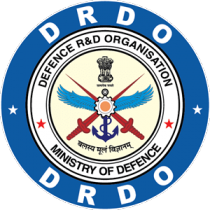Global Next-Gen Aircraft Propulsion System Market Analysis 2021-2025 & 2035: Focus on Propulsion Type, End User, Component, and Country - ResearchAndMarkets.com
The "Next-Gen Aircraft Propulsion System Market - A Global and Regional Analysis: Focus on Propulsion Type, End User, Component, and Country - Analysis and Forecast, 2025-2035" report has been added to ResearchAndMarkets.com's offering.
The global next-gen aircraft propulsion system market analysis projects the market to have significant growth of CAGR 16.34% during the forecast period 2025-2035.
The global next-gen aircraft propulsion system market is gaining widespread importance owing to the increasing demand of eco-friendly air travel, reduced operational costs and increased speeds. Moreover, the investments in alternative electric power sources, advancements in next-generation electronic components, and advances in high-density battery solutions are other important factors that may propel the market growth in the coming years.
Next-Gen Aircraft Propulsion System Industry Overview
U.S. is expected to dominate the global next-gen aircraft propulsion system market with an estimated share of 50.8% in 2035. China and U.K. are the two most prominent countries having significant share in the next-gen aircraft propulsion system market.
The global next-gen aircraft propulsion system market is gaining widespread importance owing to the increasing demand of eco-friendly air travel, reduced operational costs and increased speeds. Moreover, the investments in alternative electric power sources, advancements in next-generation electronic components, and advances in high-density battery solutions are other important factors that may propel the market growth in the coming years.
Market Segmentation
Next-Gen Aircraft Propulsion System Market by Propulsion Type
The propulsion type segment is segmented into all-electric propulsion, hybrid-electric propulsion, turboelectric propulsion, scramjet and ramjet propulsion, hydrogen propulsion, and solar propulsion. Among these propulsion types, hybrid-electric propulsion is expected to attain high investments in the future due to the high adoption rate in the commercial aviation industry. In 2025, hybrid-electric is expected to acquire the highest market value and is expected to grow to at a double digit CAGR during the forecast period.
Next-Gen Aircraft Propulsion System Market by End-User
The report analyzes different end-user that include military, commercial and civil, and government. The commercial and civil industry is undergoing significant growth and the widespread use of aircraft for several applications. Moreover, the increasing deployment of UAVs in applications such as mapping, surveying, and inspection, by several companies, is expected to drive the demand for next-gen propulsion systems. In 2025, the commercial and civil segment is expected to acquire the highest market value and is expected to grow significantly during the forecast period.
Next-Gen Aircraft Propulsion System Market by Region
The global next-gen aircraft propulsion system market is segregated into major regions, namely North America, South America, Europe, Middle East and Africa, and Asia-Pacific. The U.S. is expected to dominate the global next-gen aircraft propulsion system market in 2025 and is anticipated to uphold its dominance throughout the forecast period.
Factors such as the presence of major next-gen aircraft propulsion system manufacturers and a significant investment by the U.S. Department of Defense (DoD) and several other companies are fueling the high growth rate and major share of the U.S. in the global next-gen aircraft propulsion system market. Moreover, increasing policies to reduce harmful emissions caused by air travel are enabling airlines to procure next-gen aircraft.
Key Topics Covered:
1 Markets
1.1 Industry Outlook
1.1.1 Aviation in Digital Age: An Overview
1.1.2 Technology Roadmap for Next-Gen Aircraft Propulsion System
1.2 Ongoing/Upcoming Programs in Top Countries for Next-Gen Aircraft Propulsion Technology
1.3 Emerging Technology Trends
1.3.1 Advancements in Battery Technology
1.3.1.1 Lithium-Sulfur
1.3.1.2 Solid State Battery
1.3.1.3 Metal-Air Battery
1.3.2 Effect of Bio and Sustainable Fuels on Aviation Industry
1.3.3 NASA's Developments on Next-Gen Aircraft Propulsion Systems
1.3.3.1 Single Propulsor Test Stand
1.3.3.2 Leading-Edge Asynchronous Propeller Technology (LEAPTech)
1.3.3.3 Hybrid-Electric Integrated Systems Testbed (HEIST) Ironbird
1.4 Patent Analysis
1.4.1 Patent Analysis (by Propulsion Type)
1.4.2 Patent Analysis (by Patent Office)
1.5 Startup and Investment Landscape
1.6 Supply Chain Analysis
1.7 Business Dynamics
1.7.1 Business Drivers
1.7.1.1 Aircraft Electric Propulsion Aids to Reduce Carbon Emission
1.7.1.2 Initiatives for Development of High-Speed Propulsion Systems
1.7.1.2.1 Jet-Powered Hypersonic Spaceplane
1.7.1.2.2 Stratofly MR3
1.7.1.2.3 LAPCAT A2
1.7.1.2.4 I Plane
1.7.1.2.5 HyperStar
1.7.1.2.6 Hexafly
1.7.1.3 Integration of Next-Gen Propulsion Systems Resulting in Low Operational Costs
1.7.2 Business Challenges
1.7.2.1 Increase MTOW Due to High-Capacity Batteries and Motors
1.7.2.2 Stringent Regulatory to Ensure Safety and Performance Standards of Aviation Models
1.7.3 Business Opportunities
1.7.3.1 Growing Investments in Clean Power Sources
1.7.3.2 Advancements in Next-Generation Electronic Components
1.7.3.3 Growing Need for High-Density Battery Solutions for All Aircraft Platforms
1.7.4 Business Strategies
1.7.4.1 Product Developments and Innovations
1.7.5 Corporate Strategies
1.7.5.1 Partnerships, Collaborations, and Contracts
1.7.5.2 Other Developments
2 Application
2.1 Demand Analysis of Next-Gen Aircraft Propulsion System Market (by End User)
2.1.1 Military
2.1.2 Commercial and Civil
2.1.3 Government
3 Products
3.1 Demand Analysis of Next-Gen Aircraft Propulsion System Market (by Propulsion Type)
3.1.1 All-Electric Propulsion
3.1.2 Hybrid-Electric Propulsion
3.1.3 Turboelectric Propulsion
3.1.4 Ramjet and Scramjet Propulsion
3.1.5 Hydrogen Propulsion
3.1.6 Solar Propulsion
3.1.7 Market Scenario for eVTOL Aircraft Propulsion System
3.2 Demand Analysis of Next-Gen Aircraft Propulsion System Market (by Component)
3.2.1 Power Generation System
3.2.2 Power Distribution
3.2.3 Power Conversion System
3.2.4 Electric Motor
3.2.5 Energy Storage and Supply System
3.2.6 Others
4 Regions
5 Markets - Competitive Benchmarking & Company Profiles
- 3W International GmbH
- Airbus S.A.S.
- Boeing
- Cranfield Aerospace Solutions
- General Electric Company
- GKN Aerospace Services Limited
- Honeywell International Inc.
- Israel Aerospace Industries Ltd.
- Lockheed Martin Corporation
- MagniX
- Rolls-Royce Holdings plc.
- Safran S.A.
- Siemens AG
- Raytheon Technologies Corporation
- Leonardo S.p.A
For more information about this report visit https://www.researchandmarkets.com/r/3bfi77
View source version on businesswire.com: https://www.businesswire.com/news/home/20210628005663/en/




